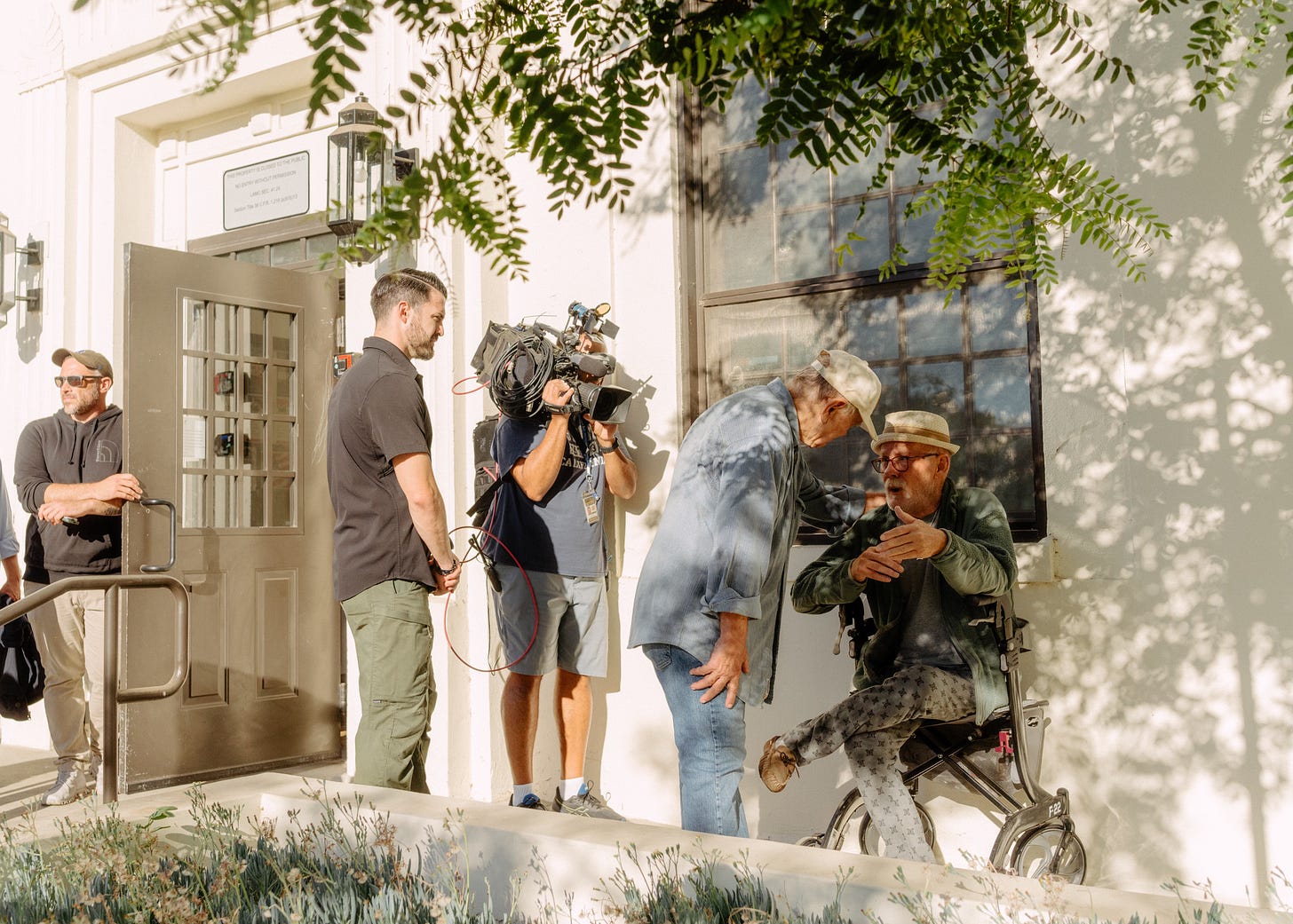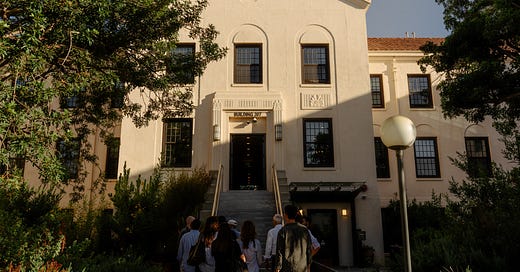Day 11: Exposing cracks in the foundation of the West LA VA
A parade of witnesses — including a VA director — laid bare the deficiencies in the department's system for addressing the needs of homeless veterans.

Housing vouchers, and veterans’ ability to make use of them in Los Angeles, were centered on the 11th day of proceedings in Powers v. McDonough.
Carlos VanNatter, director of Section 8 housing for the Housing Authority of the City of Los Angeles (HACLA), took the stand first and explained to the court the state of the HUD-VASH voucher system in LA. HUD-VASH (Veterans Assisted Supportive Housing) vouchers are allocated to local housing authorities and pay for the rent of homeless veterans up to certain rent thresholds. The thresholds are based on an area’s fair market rent.
There are two types of vouchers: project-based, which are tied to specific properties that serve mainly or only low-income residents, and tenant-based, which can, theoretically, be used by a renter at any rental property that meets certain conditions or criteria.
Long Lead is reporting from Powers v. McDonough every day court is in session. Subscribe here to get our daily briefings sent direct to your inbox every morning:
VanNatter explained that around 4,900 HUD-VASH vouchers were in use in Los Angeles and noted that the program faces several challenges including the rental market and utilization rates.
If a housing agency, such as the HACLA, falls below a certain utilization rate (in which a person is referred to the program and receives a voucher) the agency could lose a portion of its allotment of vouchers. The utilization rate, VanNatter said, depended on the VA referring homeless veterans to the program.
But low referrals from the VA had “persisted” since the start of the program in 2008, VanNatter said, adding that he had met with local VA officials Sally Hammitt and John Kuhn and some national officials to address the issue. It was not the first time the issue had been raised during the trial: HUD official Michael Seeger Dennis testified to referral issues last week.
VanNatter also addressed the issue of attrition in the HUD-VASH program where veterans fall out of housing that had been obtained. In some years, the number of residents lost to attrition had outpaced the number of referrals to the program, VanNatter testified.
Attrition can be caused by various factors like death and “skipping,” when a person leaves the residence without notice, VanNatter explained. But one of the major factors of attrition is “non-compliance” in which a tenant loses housing due to lapses in paperwork or other issues. Non-compliance-based attrition could be addressed with additional case workers, VanNatter said.
Lost in a labyrinth of bureaucracy
When Jeffrey Powers first saw the West LA VA in July 2020, the sprawling campus seemed like a paradise: temperate weather, historic Mission Revival-style buildings, and lush parkland. But the Navy veteran soon found that despite the ample space, the land lacked the thing he needed most: housing.
Upon arriving at the campus, he was sheltered in a tent at CTRS. Powers says he had a problem with his knee that was being aggravated by the getting up and down to exit the shelter. Organizations and private donors “offered the big tents that you could stand up in, but [the VA] refused to accept them,” he says. “The ones they gave us were — they call them three-man tents, but if you got three people in there, they’d better be skinny.”
One night, Powers was sleeping in the tent. “I’m sitting there and I see this little thing is just bumping against the sleeping bag.… I reached out and I touch it and I’m like, ‘Oh, what is that?’” Powers pulled back the sleeping bag to discover that a gopher had chewed through the tarp and the tent and was now inside the shelter with him. Powers told the VA officials about the gopher, and they decided to put the tent on a palette to keep the animals out. When they showed him his new accommodations, Powers noticed something else had changed: The tent was smaller, down from a three-man to a two-man shelter.
In September 2020, Powers got a room at a local Motel 6 and then fell into a labyrinth of bureaucracy that included seven case managers as he was shuffled between various sheltering options, agencies, and voucher programs all around the county (and took a trip back home to Phoenix) until he ended up where he had started: CTRS. After resettling there, he left the campus to stay at a friend’s apartment for a weekend. When he returned to his tent, he found a rat sitting on his cot eating a granola bar. “I just lost it,” says Powers, who ended up tearing the tent apart to get the pest out. “That’s when they decided that I should leave CTRS,” he says. Powers left CTRS and found a home at Veterans Row.
For more on Powers’ journey through the VA’s housing bureaucracy, read “The Old Guard and the New Fight,” Part 5 of Home of the Brave.
During cross-examination from the defense, VanNatter was shown HUD-VASH statistics from the first half of 2024 that seemed to indicate an improvement in the number of referrals made by the VA and in attrition.
“Voucher utilization is a very complex problem,” said Keith Harris, executive homelessness agent for the VA Greater Los Angeles, who continued his testimony from Thursday.
Harris acknowledged issues with attrition and referrals but also detailed that one of the major factors plaguing veterans was the average median income issue at the heart of the lawsuit. He said he has been “flabbergasted” by the AMI issue and has spent much of the last two years attempting to address it.
Harris detailed that for Building 207 on the VA campus, for instance, he had lobbied for the developers to raise the AMI threshold above 30% which they did. But he noted that about half of the units on track to open at the campus were still being built with a 30% AMI restriction.
As had been noted previously in the trial, one of the major hurdles to fully addressing the AMI issue were not only HUD rules, which the agency has proposed changing, but Treasury Department guidelines as well.
Harris testified that last year he made a presentation to a federal advisory committee regarding the issue in which he outlined two main solutions: raise the threshold and remove disability payments from consideration as income.
He said he “became a thorn in the side of other agencies” over the issue with developments, like the HUD rule change, occurring within the past few weeks. Harris also inferred that the Treasury Department was mulling its options in addressing the issue.
At that, Judge David Carter interjected.
“What’s taken a year? Why should this court have any confidence that this (rule change) is going to happen?” Carter asked. “These are going to be some wide-ranging decisions I have to make,” he added.

Two veterans also testified on Friday, speaking about their issues with HUD-VASH program despite its benefits.
Joseph Fields, an Army Artillery veteran who enlisted at 17 years old, spoke about his experiences with homelessness. Afflicted by back problems due to his service as well as his homelessness, he walked to the witness stand bent over at the waist; his torso was all but parallel to the floor. After leaving the Army, Fields said, he had issues “dealing with life on life’s terms.” He struggled with homelessness, spending several years on Veteran’s Row, PTSD, and muscle and joint pain.
Eventually, he applied for the HUD-VASH program but said he had to “fill out the application two or three times” before being successful. Nonetheless, he was elated with his apartment on the West LA VA campus, which he had visited with his grandfather, a Korean War veteran, decades before.
“It’s been 10 years since I had an apartment,” Fields said, his voice breaking. “Hanging out with vets on that property means a lot to me,” he added.
“What did they tell you ‘no’ for?”
In this clip from "The Promised Land," a Long Lead documentary by Rebecca Murga, veterans advocate Rob Reynolds describes his first day on the West LA VA campus.
The full, short film is an unflinching look at LA’s homeless veteran crisis, providing a street-level view of what life is like when your government leaves you behind. Watch it here.
The comradery of veterans was something the second veteran witness to testify, Laurianne Wright, was missing at her HUD-VASH apartment in Lancaster, Calif., which is located 65 miles from the West LA VA campus.
“My depression has gotten really bad,” Wright testified. “I feel isolated. I’m trying to get out of there.”
Wright enlisted in the Army in the 1980s while still in high school. But a few years into her service, while stationed in Italy, she was sexually assaulted by a squad commander. After the incident was investigated, she was honorably discharged.
“I left the military very ashamed... I didn’t do anything wrong,” Wright said. As with Fields, she struggled with PTSD, substance abuse, and homelessness.
Despite being homeless and spending time at places like Veterans Row and the tiny shelters at CTRS, Wright found comfort among other veterans and near the VA campus.
There’s nothing like being able to do a walk-in at the clinic, she said.
Regarding why she had joined the lawsuit as a class representative, Wright said she didn’t want anyone who had reached out for help to suffer.
Taking the podium, a defense counsel thanked Wright for her service. He paused and then, with a shaky voice, commended her for being a survivor.
Proceedings for Powers v. McDonough will continue on Monday, August 26 at 8:00 a.m.







